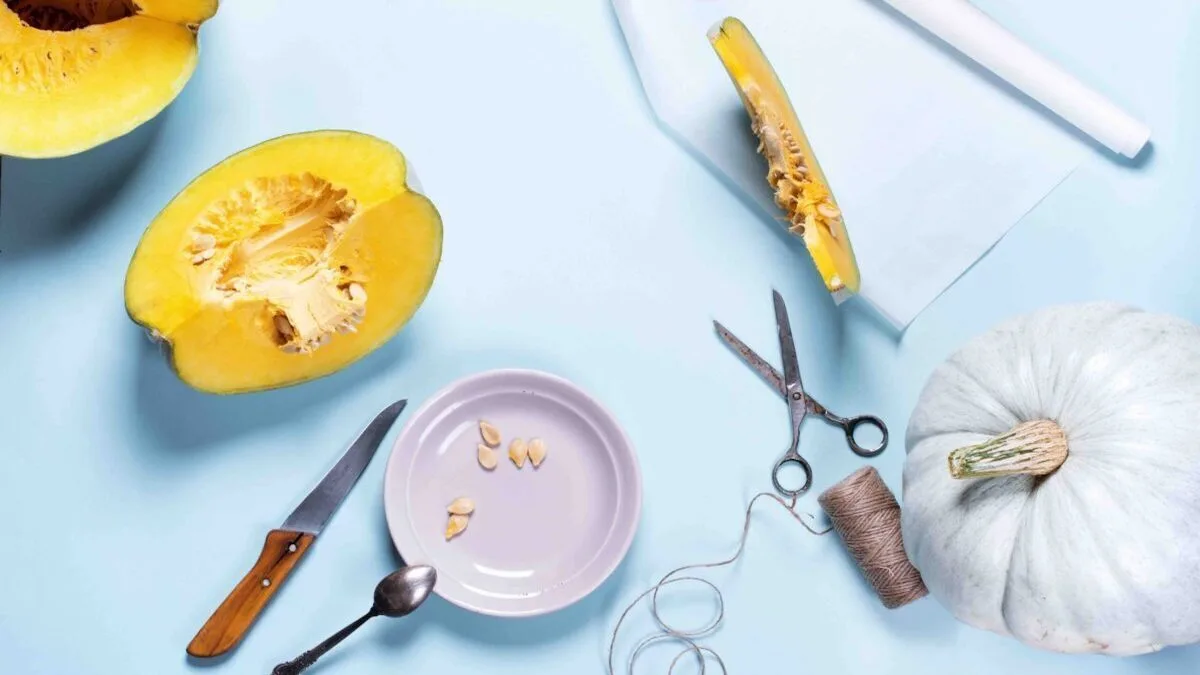Table of contents
Collecting seeds for planting
Collecting seeds that you can plant at home is a great idea. Indeed collecting seeds to plant the next crop is an ancient tradition.
You can collect all manner of seeds for fruit and vegetables to plant in your garden. Pumpkin seeds are a great example of a good seed to save. However, pumpkins can cross with zucchinis so grow them a little apart if you want to keep your seed true.
The best plants for saving seeds are heirlooms, because the seeds usually grow into plants that look like their parents. If you save seeds from hybrids, they probably will not grow into the exact same plants they came from.
True to seed refers to seeds, which when planted, produce plants with the same characteristics as the parent plant the seed came from.
Collecting Seeds Australia
The Seed Savers’ Network is a not-for-profit organisation based in Australia to conserve, in culture, seeds of traditional varieties of plants for food and other uses.
Seed Savers’ favour varieties that are locally-adapted, hardy and dependent on neither synthetic fertilisers nor toxic chemicals, but home-made composts. These home gardeners save locally-adapted seeds of tomorrow’s food.
Collecting Seeds Near Me
Seed collection is a vital practice for gardeners, conservationists, and anyone interested in preserving plant biodiversity.
Collecting seeds allows you to propagate plants, save money on buying new seeds or plants, and maintain or enhance the genetic diversity of your garden.
Seed Collecting Techniques
The technique you should use will depend upon whether you are collecting wet seeds or dry seeds.
Wet Seed Collection
If you are collecting ‘wet seeds’ like tomatoes, they should be soaked in water for a few days. Then sieve the pulp, washing under a tap to remove the mush. After this lay the seeds on a paper towel. Once they are completely dry, save the sheets of seed somewhere safe.
For example, when collecting tomato seeds, first make sure the fruit has fully ripened. Then scoop out the pulpy seeds and plop them into a jar of water. Leave for at least 3 days, but swirl the jar a couple times each day.
After a few days the seeds should have come free from the pulp and dropped to the bottom of the jar. So simply tip the water out and rinse the seeds. Afterwards, leave the seeds on a paper towel until fully dry. Then store your seeds in an envelope in a cool dry place.
Exploding Seeds
If you are dealing with plants with exploding seed heads (eg peas) you will need to check them every few days. When you see seeds to collect, place a bag over the flowering head and shake. This should cause the ripe seed heads to explode into the bag. Otherwise you can remove the seed heads on their stems as they turn brown and place them in a labelled paper bag.

Collecting Seeds from Flowers
Collecting seeds from flowers is a rewarding process that allows you to propagate your favourite plants, save money, and maintain genetic diversity in your garden.
Wait until the flowers have finished blooming and the seed heads have matured. This usually happens at the end of the growing season when the flower heads start to dry and turn brown. The seeds should be fully developed and the seed pods or heads should be dry before collection.
Collect seeds when the flower heads are completely dry and turning brown.
Break open the seed heads to release the thin, elongated seeds.
Allow the seed heads to dry on the plant until they are brown and spiky.
Cut the heads and dry them further if necessary. Rub the seed heads to release the small, angular seeds.
When collecting seeds from wildflowers or public gardens, only take a small portion to ensure the plants can continue to propagate naturally.
Collect seeds from multiple plants of the same species to ensure genetic diversity.
You can also join seed saving organisations or participate in local seed swaps to share seeds and knowledge with other gardeners. By following these guidelines, you can successfully collect, clean, and store seeds from your favourite flowers, ensuring a vibrant and diverse garden year after year.
How to Collect Seeds from Perennials
Collecting seeds from perennials is straightforward and helps propagate your garden. Simply take the following steps, as outlined in this guide.
- Identify Seed Heads: Let flower heads mature and dry on the plant until they turn brown.
- Harvest: Cut dried seed heads, and place them in a paper bag.
- Extract Seeds: Gently shake the bag or rub the seed heads to release the seeds.
- Clean and Dry: Remove any chaff or plant debris and ensure seeds are completely dry.
- Store: Place seeds in labeled envelopes or containers in a cool, dark location.
Popular perennials for seed collection include echinacea, coneflowers, lupines, and rudbeckia.
What Flowers can you Collect Seeds From
Here are several popular garden flowers you can easily collect seeds from:
- Marigolds – Allow flower heads to dry on the plant before harvesting.
- Sunflowers – Wait for the heads to dry, then collect mature seeds.
- Cosmos – Gather seeds from spent, dry flower heads.
- Zinnias – Dry out flower heads and store seeds.
- Poppies – Collect seeds from mature seed pods after flowering.
Simply let the flowers mature and dry naturally, then gather the seeds for future planting.
Why is Seed Saving illegal
Seed saving is sometimes restricted or even considered illegal in certain contexts due to intellectual property laws, such as patents or plant breeders’ rights. These laws protect the rights of plant breeders and companies that have invested in developing new plant varieties, especially genetically modified or hybrid plants.
Under these laws, saving seeds from certain plants for replanting, especially on a commercial scale, can infringe on breeders’ proprietary rights. However, traditional seed varieties and open-pollinated plants are generally free from such restrictions, and seed saving for personal use remains widely practiced and supported.
How to store seeds for years
Make sure your seeds are dry before you store them. You don’t want them to rot!
Also remember that both high humidity and high temperatures are catalysts for germination. They trigger the seeds’ metabolism. So the ‘opposite’ conditions are best for storing seeds. If you live in the tropics it is particularly important to make sure you have found a ‘cool and dry’ place for seed storage.
After collecting seeds you need to store them. Place your seeds in an envelope or paper bag and seal them in plastic containers or glass jars. Then store them in that perfect dry, cool, dark environment.
Seeds will be viable for 1 to 2 years. However, two years after collecting your seeds you will see germination rates drop for many varieties of seed. While some seeds can last a lot longer, they do not last forever.


Comments
4 responses to “Collecting Seeds: Your Guide”
[…] you can, collect seeds. This way you won’t have to purchase seeds for your garden. For example, when you purchase a […]
[…] Collecting Seeds […]
[…] Collecting Seeds […]
[…] Collecting seeds […]